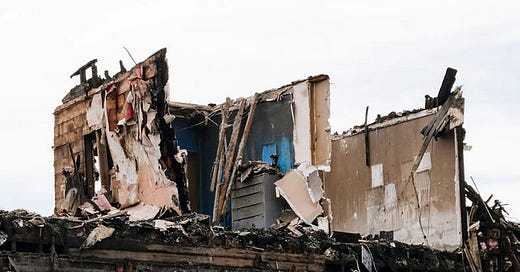U.S. Companies Violating the Human Rights of Ukrainian Citizens
They sell detailed images to agents of Russia, and days later, those 'images' are blown to bits by missiles.
The images of Ukraine seen on Google Maps are random. Given the restrictions of the war, they are most likely from years ago. Russia’s military, however, is using fresh images — some just days and even hours old — provided by American businesses. The sale of these images is a human rights violation.
Why are these companies not being sanctioned or investigated by the U.S. government?
U.S. companies are capitalizing on their capabilities by selling highly detailed photos from satellite flyovers. Russians with international credit cards can purchase high-resolution images of virtually every square meter, including those of Ukraine, for as little as $1,200. This process, known as ‘tasking,’ involves the customer requesting an image of a specific area, which the satellite’s cameras then precisely target. The resulting image is accompanied by grid coordinates, significantly enhancing the precision of potential military operations.
Ukraine has been keeping track of the disturbing trend. A satellite takes a picture of a site, and a few days to a week later, that site is hit by Russia’s most costly, long-range strikes. Without the precise imagery, the chance that such costly weaponry misses its target is greatly increased. Russia can’t take this chance, so it’s rather simplistically purchasing the images from American companies more than happy to earn some extra cash.
Sometimes a coincidence is just a coincidence. But the suspicious cases have added up, and because many satellite-imagery companies offer a backlist of archived images, marked with dates and coordinates, it’s possible to browse tens of thousands of images taken of Ukraine and notice suggestive patterns. In the week before April 2, 2022, about a month after Russia’s initial invasion, images of a remote airfield outside Myrhorod, Ukraine, were requested from American companies at least nine times. Myrhorod is not a particularly interesting place, apart from that airfield. On April 2, missiles landed there. In the week that followed, someone asked for images of the airfield again. Satellite imaging has preceded strikes in urban areas as well: In Lviv, just before March 26, 2022, someone tasked a satellite with looking at a factory used for military-armor production. It, too, was struck. In late January of this year, someone commissioned a commercial-satellite company to take fresh images of Kyiv, just before the city was hit by a missile barrage (A Suspicious Pattern).
The companies selling these images to the “third parties” can pretend as much as they want that they don’t know what they are being used for, but thanks to the “bombing trail” that has been documented by the Ukrainian military, it doesn’t take a lot of guessing. In a theoretical and real sense, the sale of the images violates the human rights of the citizens of Ukraine. There is a thing known as ESG — environmental, social, and governance — which also pertains to whether a company’s commercial activities harm someone’s human rights. I think getting blown up by a Russian missile falls into this category.
A San Francisco-based company called Planet may focus most of its business activities on doing good things for companies and governments, but the simple fact that some of their images are ending up in the hands of the genociding Russian army is something they should be concerned about — unless, of course, they are working secretly with the Russian government. Planet, along with another company called Maxar, are two of the largest commercial-satellite-imaging companies in the world. While the “smoking gun” image — or email — hasn’t yet been found, it is again a case of extreme naivete to think that the products of these companies are not providing the Russian military with the highly-detailed analyses it needs to strike Ukrainian targets confidently.
An executive of a firm that analyzes satellite imagery told me that the firm noticed a pattern dating back to 2022, by cross-referencing tasked images against actual attacks. (The executive requested anonymity because the firm does business with the same satellite companies whose images it reviewed, and does not want its relationships to sour over bad publicity.) The executive identified more than 350 Russian missile strikes in the first year of the war, all deep within Ukrainian territory. I showed a selection of cases to Jack O’Connor, who teaches geospatial intelligence at Johns Hopkins University, and he wrote back, “The data suggests that the Russians are doing what the Ukrainians suspect.” He was, however, cautious about what one can infer with certainty, no matter what patterns one sees. “There is no direct causal relation that can be proven from this data (A Suspicious Pattern).”
It’s morally reprehensible that these companies, which undoubtedly like to think of themselves as progressive and politically correct, hold the extra sales in higher regard than they do the lives of innocent Ukrainian civilians.
But then again, business is business, profit is profit, and people are expendable.



